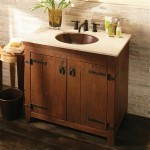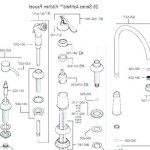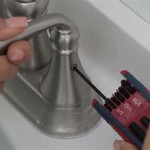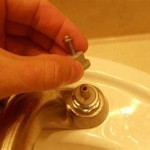Why Do I Have Gnats In The Bathroom?
The presence of gnats in the bathroom can be a frustrating and unsanitary experience. These tiny flies are attracted to moisture and decaying organic matter, making bathrooms a prime breeding ground. Understanding the factors that contribute to gnat infestations can help you effectively control them and prevent future occurrences.
Sources of Moisture and Organic Matter
Gnats thrive in moist environments with access to decaying organic matter. The bathroom, with its frequent water use and potential for spills and leaks, offers an ideal breeding ground. Common sources of moisture and organic matter in bathrooms include:
- Standing water: Puddles on the floor, water in sinks or tubs, and clogged drains are common attractants.
- Leaky pipes or faucets: Even small leaks can provide a constant source of moisture.
- Wet towels or washcloths: Towels left damp after use can quickly become a breeding ground.
- Overflowing trash cans: Food waste and other organic materials in trash cans can attract gnats.
- Houseplants: The soil of houseplants can harbor gnats, especially if it is overwatered.
Gnats can also be attracted to the moisture and organic matter found in drain traps, where hair, soap residue, and other debris accumulate.
Life Cycle of Gnats
Understanding the life cycle of gnats is essential for effective control. Gnats typically lay their eggs in moist environments, and these eggs hatch into larvae that feed on decaying organic matter. The larvae eventually pupate and emerge as adult gnats, ready to reproduce and continue the cycle. This rapid life cycle means that even small populations of gnats can quickly multiply.
How to Get Rid of Gnats in the Bathroom
Eliminating the sources of moisture and organic matter is crucial for controlling gnat infestations. Here are some practical steps to take:
1. Eliminate Standing Water
Dry all surfaces after use, including the floor, sinks, and bathtub. Wipe up spills immediately. Ensure that drains are not clogged and running smoothly.
2. Fix Leaks
Repair any leaky pipes or faucets promptly. Even small leaks can provide a constant source of moisture.
3. Dry Towels and Washcloths Thoroughly
Hang towels and washcloths to dry completely after use. Avoid leaving them damp in hampers or on the floor.
4. Clean Trash Cans Regularly
Empty and clean trash cans frequently, especially those containing food waste. Use a disinfectant to clean the inside of the can and prevent odor buildup.
5. Treat Houseplant Soil
If you have houseplants in the bathroom, allow the soil to dry out slightly between waterings. Consider using a insecticidal soap or diatomaceous earth to treat the soil if you notice gnats.
6. Clean Drain Traps
Pour boiling water down the drain to help clear out organic matter and debris. Consider using a drain cleaner to help remove stubborn clogs. Regularly cleaning drain traps can help prevent gnat infestations.
7. Use Traps
Commercial gnat traps can be effective in trapping and killing adult gnats. These traps typically use sticky paper or a combination of light and a sticky surface to attract and trap the gnats.
8. Use Insecticide Sprays
Insecticide sprays specifically designed for gnats can help to kill adult gnats. However, it is important to use these sprays with caution and follow the manufacturer's instructions. Avoid spraying these products near food or pets.
How To Get Rid Of Gnats Drain Flies Fruit And Fungus

The Simple Trick To Stop Pesky Gnats From Taking Over Your Drains

Fruit Flies In The Bathroom Get Rid Of Them Michael S Plumbing Orlando
Jab Plumbing Solutions Blog Blocked Drain Plumbers

5 Easy Ways To Get Rid Of Drain Flies Fast

How To Get Rid Of Drain Flies Moth And Prevent An Infestation Pest Defence
We Are Seeing Small Flies In Our Bathroom Any Idea What Could Be Causing Them To Show Up Quora

How To Get Rid Of Drain Flies Rt Olson Plumbing

How To Rid Of Drain Flies Forbes Home

Gnats In Basement Doityourself Com Community Forums
Related Posts







